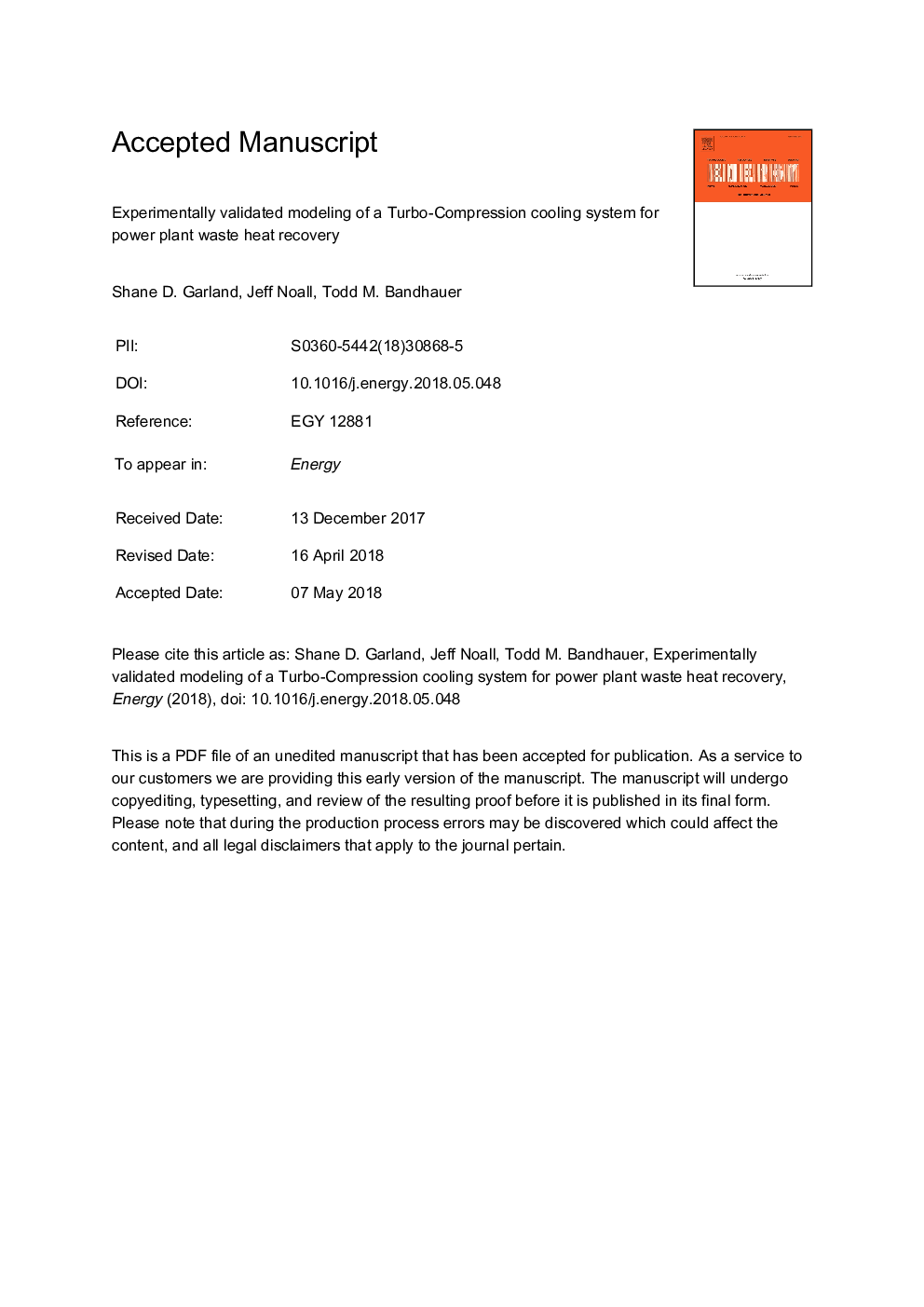| Article ID | Journal | Published Year | Pages | File Type |
|---|---|---|---|---|
| 8071315 | Energy | 2018 | 49 Pages |
Abstract
Waste heat recovery systems utilize exhaust heat from power generation systems to produce mechanical work, provide cooling, or create high temperature thermal energy. One system that provides a cooling effect is the turbo-compression cooling system, which operates by using low-grade waste heat to vaporize a fluid and spin a turbine in a recuperative Rankine cycle. The turbine power is used to directly drive a compressor in a traditional vapor-compression cycle. This study presents a theoretical modeling approach that uses compressor and turbine efficiency maps and a heat exchanger UA scaling methodology to make performance predictions over a range of ambient temperatures and cooling loads. The results of experimental testing for a 250 kWth TCCS showed good correlation (maximum error of 2.0%) for power and cooling cycle mass flow ranges of 0.35â¯kgâ¯sâ1-0.5â¯kgâ¯sâ1 and 0.65-0.85â¯kgâ¯sâ1, respectively. The validated modeling approach was used to predict system performance for a Natural Gas Combined Cycle power plant application.
Related Topics
Physical Sciences and Engineering
Energy
Energy (General)
Authors
Shane D. Garland, Jeff Noall, Todd M. Bandhauer,
